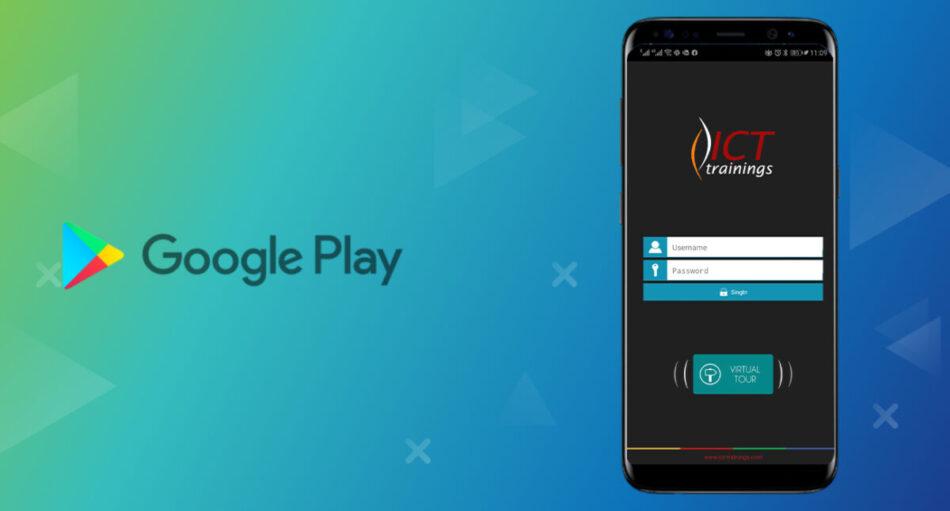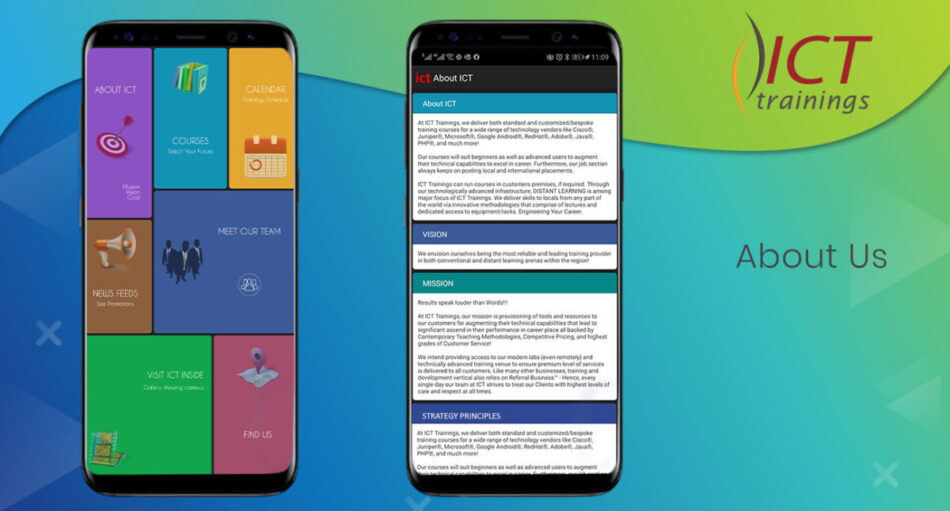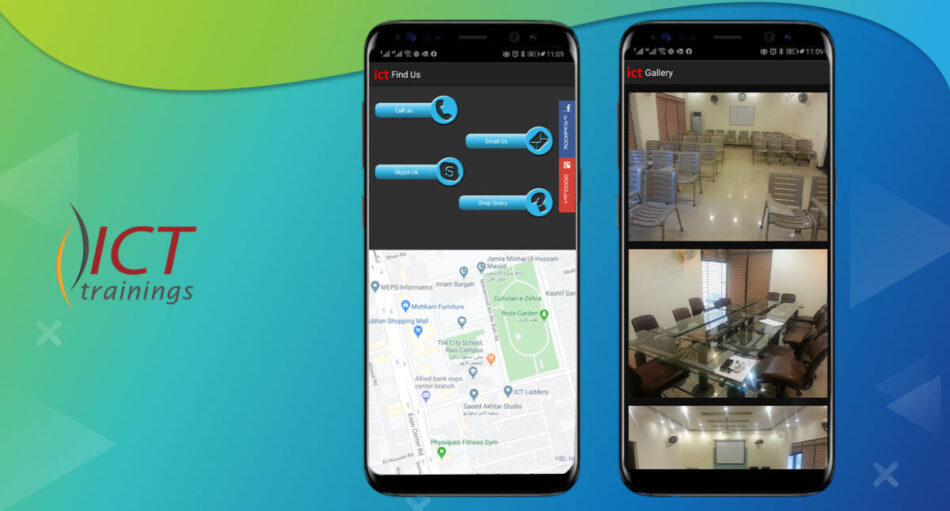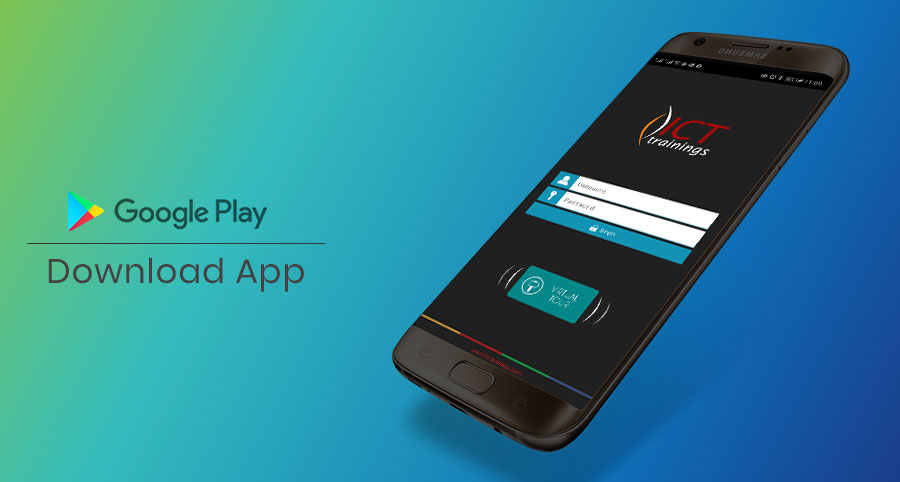ICT-Trainings

Introduction:
ICT deliver both standard and customized/bespoke training courses for a wide range of technology vendors like Cisco®, Juniper®, Microsoft®, RedHat®, Adobe®, Java®, PHP®, and much more!
ICT Trainings can run courses in customers premises, if required. Through our technologically advanced infrastructure, DISTANT LEARNING is among major focus of ICT Trainings. We deliver skills to locals from any part of the world via innovative methodologies that comprise of lectures and dedicated access to equipment/racks. Engineering Your Career.
- Free Training
- IT Training
- Web
- Microsoft
- Cisco
- Accountancy
Technology Stack:
- HTML
- CSS
- PHP
- MySQL
- Swift 4
- XML
- Kotlin
- Objective-C



ICT Training Methodology
Over the decades, there are many technological advances in the training industry. At ICT TRAININGS, we follow different training methodologies according to the needs of training and trainees.
We’d actually blend more than one training methodology from below:
Classroom or Instructor-Led Training
Instructor-led training remains one of the most popular training techniques for trainers at ICT TRAININGS. Some of variations being followed are:
Blackboard/Whiteboard. This may be the most “old-fashioned” method, but it can still be effective, especially if you invite trainees to write on the board or ask for feedback that you write on the board.
PowerPoint® presentation. Presentation software is used to create customized group training sessions that are led by an instructor. Training materials are provided on CDROM and displayed on a large screen for any number of trainees.
Interactive Methods
There are many ways that we break up training sessions and keep trainees attentive and involved, including:
Quizzes. For long, complicated training, we stop periodically to administer brief quizzes on information presented to that point. We also begin sessions with a pre-quiz and let participants know there will also be a follow-up quiz. Trainees hence stay engaged in order to improve their pre-quiz scores on the final quiz. Furthermore, we continuously motivate participants by offering awards to the highest scorers or the most improved scores.
Small group discussions. Breaking the participants down into small groups and giving them case studies or work situations to discuss or solve is yet another proven formula.
Case studies. It is quite natural for adults to bring a problem-oriented way of thinking to workplace training. Case studies are an excellent method to capitalize on this type of adult learning. By analyzing real job/real-world related situations, adults can learn how to handle similar situations. They can also see how various elements of a job work together to create problems as well as solutions.
Active summaries. We let a small group chose its leader and then ask them to summarize lecture’s major points. The group leader from each unit then presents the summary.
Q & A sessions. Informal question-and-answer sessions are most effective with small groups and for updating skills rather than teaching new skills.
Question cards. During the lecture, we may ask participants to write questions on the subject matter. All such questions are collected and then conducted in form of a quiz session.
Role-playing. By assuming roles and acting out situations that might occur in the workplace, employees learn how to handle various situations before they face them on the job. Role-playing is an excellent training technique for many interpersonal skills, such as customer service, interviewing, and supervising.
Demonstrations. Whenever and wherever possible, we keep tools or equipment that are part of the training topic and demonstrate the steps being taught or the processes being adopted.
Hands-On Training
Experiential, or hands-on, training offers several more effective techniques for teaching tools and technologies.
Cross-training. This method allows trainees to experience other jobs, which not only enhances employee skills but also gives companies the benefit of having employees who can perform more than one job.
Demonstrations. Demonstrations are attention-grabbers. They are an excellent way to teach trainees how to use new equipment or technology. Combined with the opportunity for questions and answers, this is a powerful, engaging form of training.
Online or E-Learning
Many companies with multiple offices/branches across different geography are relying on other technologies to deliver training. In our experience, we’ve found large organizations to using a record level of e-learning. This method is becoming more and more popular as access to the Web becomes more widely available, particularly after 3G/4G/LTE auctions in 2015 onwards.
Some examples include:
Web-based training. This method puts computer-based training modules onto the Web, which companies can then make available to their employees either on the company’s intranet or on a section of the ICT TRAININGS’ website that is set up for a particular company. These courses provide a hands-on, interactive way for trainees to work through training presentations that are similar to CD-ROM or PowerPoint, on their own. Training materials are standardized because all trainees will use the same program. Materials are also easy to update, so all such trainings are always in step with local industry.
Tele or video – conferencing. These methods allow the trainer to be in one location and trainees to be scattered in several locations. Participants are networked into the central location and can usually ask questions of the trainer via the telephone or by a web chat feature.
Web meetings, or webinars. This method contains audio and visual components. Participants dial in to receive live audio training and also follow visual material that appears on their computer screens. These presentations are similar to CD-ROM or PowerPoint presentations and sometimes offer minimal online interactivity. Q & A sessions may also be held at the end of sessions.
E-mail. All such trainees that we serve from our ICT TRAININGS base are privileged to reach their instructors even after the training delivery is done. Emails and SKYPE IDs are typically shared with trainees in order to help them as and when needed.




















